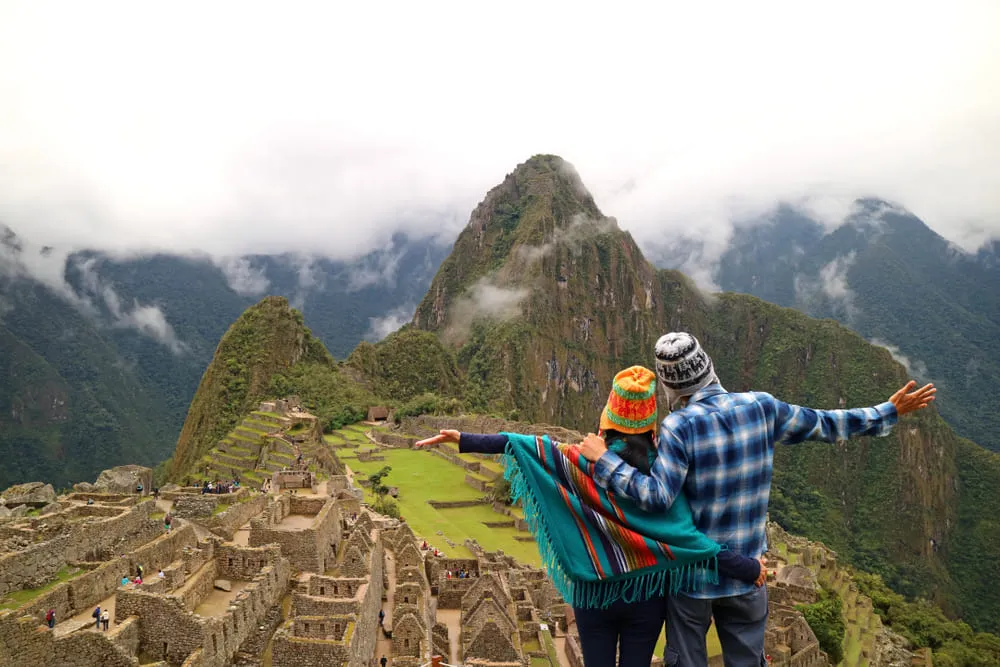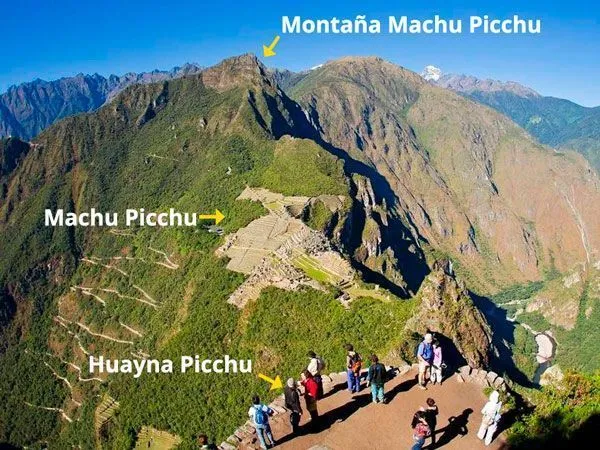 Every year, thousands of travelers ask themselves the same question before coming to Peru: How high is Machu Picchu? This wonder of the world not only amazes with its beauty, but also surprises many with its unexpected altitude. While it may not be the highest point in the Andes, the elevation of Machu Picchu—2,430 meters above sea level—can still affect your body if you’re not prepared.
Every year, thousands of travelers ask themselves the same question before coming to Peru: How high is Machu Picchu? This wonder of the world not only amazes with its beauty, but also surprises many with its unexpected altitude. While it may not be the highest point in the Andes, the elevation of Machu Picchu—2,430 meters above sea level—can still affect your body if you’re not prepared.
As a local guide from Cusco, I’ve seen many visitors underestimate how altitude works in Peru. Some expect Machu Picchu to be the highest point of their trip, when in fact Cusco (3,399 m) is
significantly higher. The confusion is common—and so are the symptoms of altitude sickness.
In this article, I’ll explain what the real elevation of Machu Picchu is, how it compares to other cities and countries, how altitude can impact your experience, and what you can do to fully enjoy your adventure without discomfort.
Machu Picchu Altitude

Machu Picchu is located in a mountainous region of the Andes mountain range, at about 7,972 feet (2,430 meters) above sea level. This area is part of a geographic zone known as the “cloud forest” or high jungle, known for its humid climate and lush vegetation. The famous site is also surrounded by the winding Urubamba River.
Its unique location between the Andes and the Amazon basin makes Machu Picchu a special destination with diverse flora and fauna. The altitude is moderate compared to Cusco, which helps many travelers acclimate more easily during their visit.
Mountains Around Machu Picchu

Machu Picchu isn’t just an impressive destination for its history, but also because of its strategic location between majestic mountains that offer stunning views and exciting challenges for trekking lovers. Here are the two main mountains you can hike within the archaeological complex:
Huayna Picchu

Huayna Picchu is the famous peak seen in the background of the classic Machu Picchu postcards. It rises to 2,693 meters (8,835 feet) above sea level. From the main citadel, the altitude gain is about 260 meters (853 feet).
This mountain is very popular among travelers for its panoramic views and the thrill of climbing steep, narrow trails surrounded by jungle vegetation. It’s perfect for those seeking a more adventurous and exciting hike. However it’s not recommended for people with vertigo or fear of heights, as some parts of the trail are very narrow and have steep drops.
Tickets for Huayna Picchu sell out quickly, since only 500 slots are available per day, split into two entrance times: 6:00 a.m. and 9:00 a.m.
We recommend booking at least 3 months in advance through the official Ministry of Culture page (tuboleto.cultura.pe) or directly on Machu Picchu Elevation.
Machu Picchu Mountain

This is the highest mountain inside the sanctuary. It reaches 3,082 meters (10,111 feet) above sea level. The elevation gain from the main citadel is approx 622 meters (2,040 feet).
The hike to the top takes about 3 hours uphill, on average. It’s great for travelers looking for a longer but less steep trek compared to Huayna Picchu. Even though it has a higher elevation difference, the trail is wider and more gradual, which makes it a better option for those with vertigo.
From the summit, you can see the Inti Punku (Sun Gate), the original Inca Trail entrance, and get breathtaking views of snow-capped peaks in the Vilcanota range, including Mount Veronica (5,893 m) and Salkantay (6,271 m).
Just like Huayna Picchu, only 500 tickets are available per day, with entrance times at 6:00 a.m. and 8:00 a.m. However, these tickets usually sell out later, making this mountain a more available option for last-minute bookings.
You can check official ticket availability at tuboleto.cultura.pe or ask directly at Machu Picchu Elevation.
Cusco Altitude

The city of Cusco is located at an altitude of 3,399 meters (11,152 feet) above sea level, making it considerably higher than Machu Picchu. More than 90 percent of tourists who visit the Wonder of the World arrive in Cusco first, either by air through Alejandro Velasco Astete International Airport, or by land from Lima, Arequipa or Bolivia.
👉 If you’re coming from Bolivia (which has an even higher elevation than Cusco), your body might already be partially acclimatized by the time you reach the city.
Due to its high elevation, it is important to take precautions against altitude sickness before starting challenging excursions like Rainbow Mountain, the hike to Humantay Lake, the Salkantay Trek to Machu Picchu, or the classic 4-day Inca Trail; many of these routes easily exceed 4,000 meters (13,123 feet).
But Cusco is much more than a starting point. It is a vibrant city full of Inca and colonial history, museums, stunning ruins and charming neighborhoods. It is ideal for light activities while your body adjusts. It is recommended to spend at least two days acclimatizing before starting high-altitude treks.
✅ Recommended tours for acclimatization:
City Tour Cusco (Half Day): A historical walk through temples, old streets and archaeological sites.
Sacred Valley Tour (Full Day): A perfect lower-altitude tour visiting Pisac, Ollantaytambo and more.
Both tours remain below 4,000 meters (13,123 feet) and are excellent choices to help your body adjust before tackling more demanding hikes at higher elevations.
What is altitude sickness?
Altitude sickness, also known as soroche in Peru, is a condition that affects many people when they arrive at high-altitude areas like Cusco, located at 3,399 meters (11,152 ft) above sea level.
It happens because there’s less oxygen available in the air, and the body needs some time to get used to this change.
✳️ It’s estimated that 4 out of 10 travelers experience some level of altitude sickness when arriving in Cusco, especially during the first hours or day.
What are the symptoms of altitude sickness?
Symptoms may vary from person to person, but the most common include:
Headache
Extreme fatigue
Nausea or vomiting
Loss of appetite
Trouble sleeping
Dizziness
Rapid heartbeat
⚠️ Symptoms normally appear between 6 to 24 hours after arriving at high elevation, and they may last two or three days unless treated properly.
Who is more likely to get it?
People coming from coastal or low-altitude areas (like Lima, Miami, New York, Paris, Amsterdam).
Elderly travelers, kids, or those with respiratory issues.
Tourists who do physical activity right after arriving.
❗ Being in great shape doesn’t really prevent it. Even professional athletes can feel altitude sickness if they don’t take time to acclimatize.
How to prevent altitude sickness in Cusco
✅ Gradual acclimatization
The golden rule is:
“Arrive, rest, hydrate and wait at least 24 hours before doing intense activities.”
Use your first day in Cusco to walk gently, visit museums or try some light local food without rushing.
✅ Stay well hydrated
Drink at least 2 to 3 liters of water per day.
High altitude can dehydrate you quickly.
Try to avoid alcohol and caffeine for your first couple of days.
✅ Natural herbal teas
The famous coca tea is a traditional and helpful remedy.
You may also try teas with muña or ginger, which help relieve discomfort.
✅ Preventive medication
Talk to your doctor before your trip. Some people take:
Acetazolamide (Diamox) to prevent and reduce symptoms.
Ibuprofen or paracetamol for headache or general pain.
✅ Eat light and healthy
Stick to soups, fruits, and carbs that are easy to digest.
Avoid fried or heavy foods during the first couple of days.
✅ Portable oxygen
Some hotels and tour agencies offer oxygen support in case of emergency.
There are also small personal oxygen bottles you can carry just in case.
What to do if you experience altitude sickness symptoms?
Rest at your hotel and avoid physical effort.
Breathe deeply and try to remain calm.
Drink hot herbal tea and stay hydrated.
Inform the hotel staff if you feel worse.
If you feel shortness of breath, strong nausea, or confusion, seek medical help right away.
Conclusion: Enjoy Cusco without soroche
Altitude sickness in Cusco is a common issue, but if you follow these tips, you can easily prevent it and enjoy your trip to the fullest.
Just remember your body needs time to adjust, so don’t rush, stay hydrated, rest properly, and always ask your doctor if unsure.













